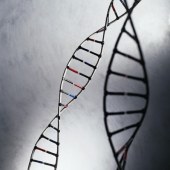
WEDNESDAY, June 9 (HealthDay News) — Nutrition and sun exposure are both prime influences on an individual’s vitamin D level, but a new study suggests that genetics could help determine a person’s risk for vitamin D deficiency.
Fresh indications of a genetic component to vitamin D levels stem from a genome analysis conducted by an international team of researchers who focused on a pool of patients composed exclusively of white men and women of European descent.
The team’s findings were released online June 9 in advance of publication in an upcoming print issue of The Lancet.
Having a sufficient amount of vitamin D in the body is critical to maintaining good musculoskeletal health, and could possibly have an impact on tissue health as well, the authors noted in a news release about the study.
To explore the notion that people might be genetically predisposed to have vitamin D deficiency, the team first determined blood levels of vitamin D in about 34,000 study participants. They then conducted a high-tech genetic analysis of the same participants to locate specific common points on their genomes that appeared to be linked to vitamin D concentration levels.
The researchers were able to pinpoint three such “sites,” which were located near genes the authors said were involved with the synthesis of cholesterol, vitamin D metabolism and vitamin D transport.
Patients whose particular genotype — as mapped out along these sites — was most predisposed to promote vitamin D deficiency were 2.5 times more likely to have that deficiency, as compared with those whose genetic background was least disposed to the problem, according to the research team led by Timothy Spector of King’s College, London.
Spector and his colleagues from the United States, the United Kingdom and Belgium, concluded that their findings “establish a role for common genetic variants in regulation of circulating vitamin D concentrations.”
The authors added that the genetic observations “improve our understanding of vitamin D regulation and could assist identification of a subgroup of the white population who are most at risk of vitamin D insufficiency and who may need extra levels of supplementation.”
They cautioned, however, that it remains as yet unclear whether or not the particular genetic sites they identified as linked to vitamin D would similarly have an impact on other racial and ethnic groups besides white Europeans.
More information
For more on vitamin D, visit the U.S. National Institutes of Health.

